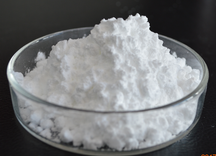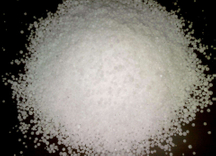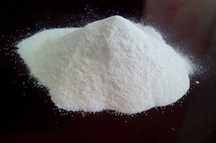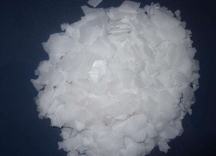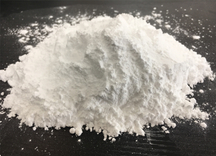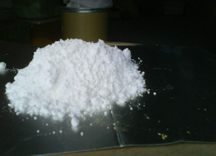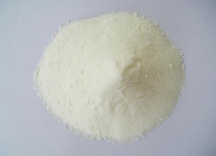
Nylon is one of the most widely used synthetic fibers in the world, found in everything from clothing and carpets to industrial applications like automotive parts and electrical components. Its strength, elasticity, and durability make it a popular choice for many manufacturers. But what makes nylon so strong and reliable? The answer lies in one of its core ingredients: Adipic Acid.
Adipic acid, a dicarboxylic acid, is essential in the synthesis of nylon, particularly nylon 6,6, which is one of the most common types of nylon. In this article, we will explore how adipic acid is used in the production of nylon, its critical role in enhancing the properties of nylon fibers, and why it is so important in the manufacturing of strong and durable fabrics.
What Is Adipic Acid?
Adipic acid is a colorless, crystalline compound that belongs to the class of dicarboxylic acids. It is an organic compound with the chemical formula C6H10O4. Adipic acid is typically produced through the oxidation of cyclohexane, a by-product of petroleum. This compound is crucial in several industrial applications, including the production of nylon, plasticizers, and polyurethane.
However, it is adipic acid’s use in the production of nylon, specifically in the production of nylon 6,6, that has made it an indispensable material in the textile and manufacturing industries.
The Role of Adipic Acid in Nylon Synthesis
Nylon 6,6 is synthesized through a polymerization process involving hexamethylenediamine (a diamine) and adipic acid. This process is known as condensation polymerization, where two smaller molecules join together to form a larger polymer chain, releasing water as a by-product.
Polymerization Process: In the nylon 6,6 synthesis process, adipic acid reacts with hexamethylenediamine to form the nylon polymer. The reaction forms long chains of nylon molecules, creating a strong and resilient synthetic fiber. The molecular structure of nylon 6,6 consists of repeating units of amide bonds (-CONH-), which give the fiber its strength, elasticity, and resistance to wear and tear.
Influence on Fiber Properties: Adipic acid plays a significant role in controlling the molecular weight of the nylon polymer. The higher the molecular weight, the stronger and more durable the resulting fiber will be. By adjusting the ratio of adipic acid and hexamethylenediamine, manufacturers can produce nylon fibers with specific characteristics to meet the demands of different applications. This flexibility is one of the reasons nylon is so widely used in industries ranging from fashion to automotive manufacturing.
Polymerization and Heat Treatment: Once the nylon polymer has been created through the reaction between adipic acid and hexamethylenediamine, the polymer undergoes a heat treatment process. This step helps to further enhance the properties of the nylon fiber, including its strength, flexibility, and resistance to heat. By carefully controlling the temperature and pressure during this stage, manufacturers can produce nylon fibers with tailored properties suited to specific applications.
Why Adipic Acid Is Important for Nylon's Strength and Durability
Nylon’s ability to withstand stress, stretching, and harsh environments is largely attributed to the chemical structure formed by adipic acid during the polymerization process. Here’s why adipic acid is essential to making nylon fibers strong and durable:
High Tensile Strength: Adipic acid helps create the strong, dense polymer chains that contribute to nylon’s high tensile strength. Tensile strength refers to the ability of a material to resist breaking under tension or stress. As a result, nylon fibers made with adipic acid are used in applications that require durability, such as ropes, seat belts, and carpeting.
Elasticity and Flexibility: One of the unique characteristics of nylon is its elasticity, which allows it to stretch without losing its original shape. The combination of adipic acid with hexamethylenediamine creates a polymer that has a high degree of flexibility, making it ideal for fabrics that need to move with the wearer, such as activewear, swimwear, and sports uniforms.
Chemical and Abrasion Resistance: Nylon 6,6, made from adipic acid, also has excellent resistance to chemical substances, oils, and solvents. This makes it a perfect material for industrial applications where the fabric may come into contact with harsh chemicals or wear down from constant friction. Its abrasion resistance ensures that nylon garments, upholstery, and industrial textiles maintain their integrity even under intense use.
Moisture Resistance: Nylon made with adipic acid also has low moisture absorption. This characteristic allows it to maintain its strength and performance even in wet conditions, unlike many natural fibers like cotton, which can weaken when saturated with water. The moisture-resistant properties of nylon make it ideal for outdoor gear, including tents, jackets, and waterproof fabrics.
UV Resistance: Another crucial feature of nylon is its ability to resist degradation from ultraviolet (UV) rays. The polymer chains formed during nylon synthesis, aided by adipic acid, help the fabric resist the harmful effects of sun exposure, preventing fading and weakening over time. This is particularly important in outdoor applications like clothing and outdoor furniture, where the fabric is exposed to constant sunlight.
Applications of Nylon Made with Adipic Acid
The benefits of nylon made with adipic acid are evident in various industries. Here are some of the most common applications:
Textiles and Apparel: Nylon is widely used in textiles and clothing because of its strength, elasticity, and durability. It is commonly used in activewear, hosiery, swimwear, and outerwear. Nylon garments can withstand wear and tear, stretch without losing shape, and resist environmental factors like moisture and UV rays.
Carpeting: The use of nylon in carpets and rugs is a result of its durability and abrasion resistance. Carpet fibers made from adipic acid-based nylon are capable of enduring heavy foot traffic while maintaining their appearance over time. These carpets also offer stain resistance, making them ideal for both residential and commercial settings.
Automotive and Industrial Applications: Nylon 6,6, made with adipic acid, is used extensively in the automotive industry for applications like seat belts, airbags, and under-the-hood components. Its high tensile strength and resistance to heat, wear, and chemicals make it suitable for harsh automotive environments.
Fishing Nets and Ropes: Nylon fibers’ strength and resistance to water make them the ideal choice for manufacturing fishing nets, ropes, and other marine equipment. These materials need to be strong and durable enough to handle the rigors of water exposure and heavy loads.
Packaging Materials: The packaging industry also benefits from nylon’s properties. Films and coatings made from adipic acid-based nylon offer strength, flexibility, and resistance to punctures, ensuring that the contents remain protected during transport and storage.
Conclusion
Adipic acid is a crucial ingredient in the production of nylon, particularly nylon 6,6, which is known for its strength, elasticity, and durability. Its role in the polymerization process helps create the long polymer chains that give nylon its unique properties, making it suitable for a wide range of applications, from textiles and apparel to automotive parts and industrial equipment.
As the demand for high-performance materials continues to grow, the role of adipic acid in nylon production will only become more important. Whether in fashion, automotive, or industrial settings, the strength, flexibility, and versatility of nylon made with adipic acid will continue to shape the materials we rely on in our daily lives.











